Merve Tomas1 , Deniz Günal-Köroğlu1 , Senem Kamiloglu2,3, Tugba Ozdal4 and Esra Capanoglu1,5*
Abstract
Phytochemicals help mitigate skin aging by scavenging free radicals, modulating key enzymatic pathways, and promoting the skin’s structural integrity. Carotenoids, vitamins, essential fatty acids, and phenolic compounds work by acting as antioxidants, inhibiting enzymes like hyaluronidase, collagenase, and elastase, which degrade skin structure, and reducing levels of inflammatory markers (IL-6, IL-8, etc.) and matrix metalloproteinases (MMP-1, MMP- 2) linked to aging. Recent research highlights that plant-based phytochemicals can improve skin elasticity, reduce hyperpigmentation, prevent the breakdown of important skin proteins, and support wound healing, making them valuable components for skin care and treatments. This review explores the multifaceted roles of phytochemicals in maintaining and improving skin health, highlighting their mechanisms of action and potential in skin anti-aging
Keywords Skin care, Anti-aging, Phytochemicals, Polyphenols, Carotenoids, Fatty acids, Saponins, Alkoloids
*Correspondence:
Esra Capanoglu
该Email地址已收到反垃圾邮件插件保护。要显示它您需要在浏览器中启用JavaScript。
1 Department of Food Engineering, Faculty of Chemical and Metallurgical Engineering, Istanbul Technical University, 34469 Maslak, Istanbul, Türkiye
2 Department of Food Engineering, Faculty of Agriculture, Bursa Uludag University, 16059 Gorukle, Bursa, Türkiye
3 Science and Technology Application and Research Center (BITUAM), Bursa Uludag University, 16059 Gorukle, Bursa, Türkiye
4 Department of Food Engineering, Faculty of Engineering and Natural Sciences, Istanbul Okan University, 34959 Tuzla, Istanbul, Türkiye
5 School of Food and Biological Engineering, Jiangsu University, Zhenjiang 212013, China
Introduction
The skin serves as the body’s primary barrier against environmental stressors. There are two main types of skin aging: intrinsic (natural or chronological) aging, which occurs inevitably within the body, and extrinsic (photoaging), which is caused by external factors like environmental pollution, UV light, and lifestyle (alcohol, smoking, etc.). Further, extrinsic aging accelerates skin damage by increasing reactive oxygen species (ROS) and activating enzymes that degrade essential skin components, leading to wrinkles, sagging, laxity, roughness, and loss of elasticity [1–6].
The skin is composed of three layers: the epidermis, dermis, and subcutaneous tissue [3, 6]. The dermis is made up of proteins in the extracellular matrix, including collagen (~28 types), elastin, and proteoglycans [6]. Collagen and elastin are key proteins in the extracellular matrix found in connective tissues, particularly in the skin, providing structural support and stability [3], and holding high levels of moisture, which keeps the skin elastic, strong, and hydrated, supported by substances like hyaluronic acid Type I collagen makes up 90%, while type III collagen makes up 10% of these proteins [6]. Thus, healthy skin is characterized by flexibility and resilience, featuring well-structured rete ridges, abundant collagen, and numerous elastic fibers [3]. In contrast, aging skin undergoes thinning of the epidermis, reduced hydration, breakdown of collagen and elastic fibers, accumulation of modified extracellular matrix components, and slower cell regeneration [7, 8].
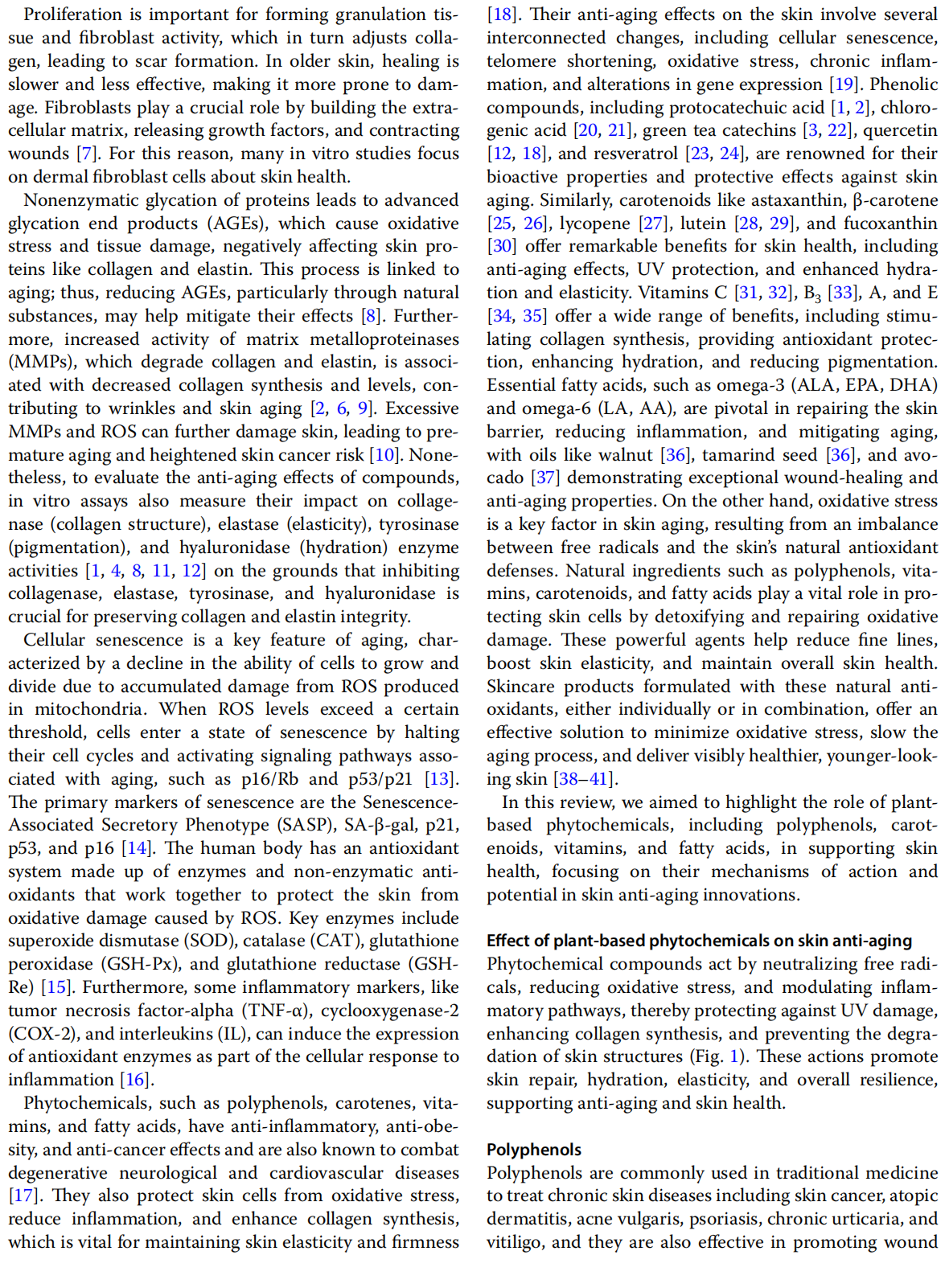
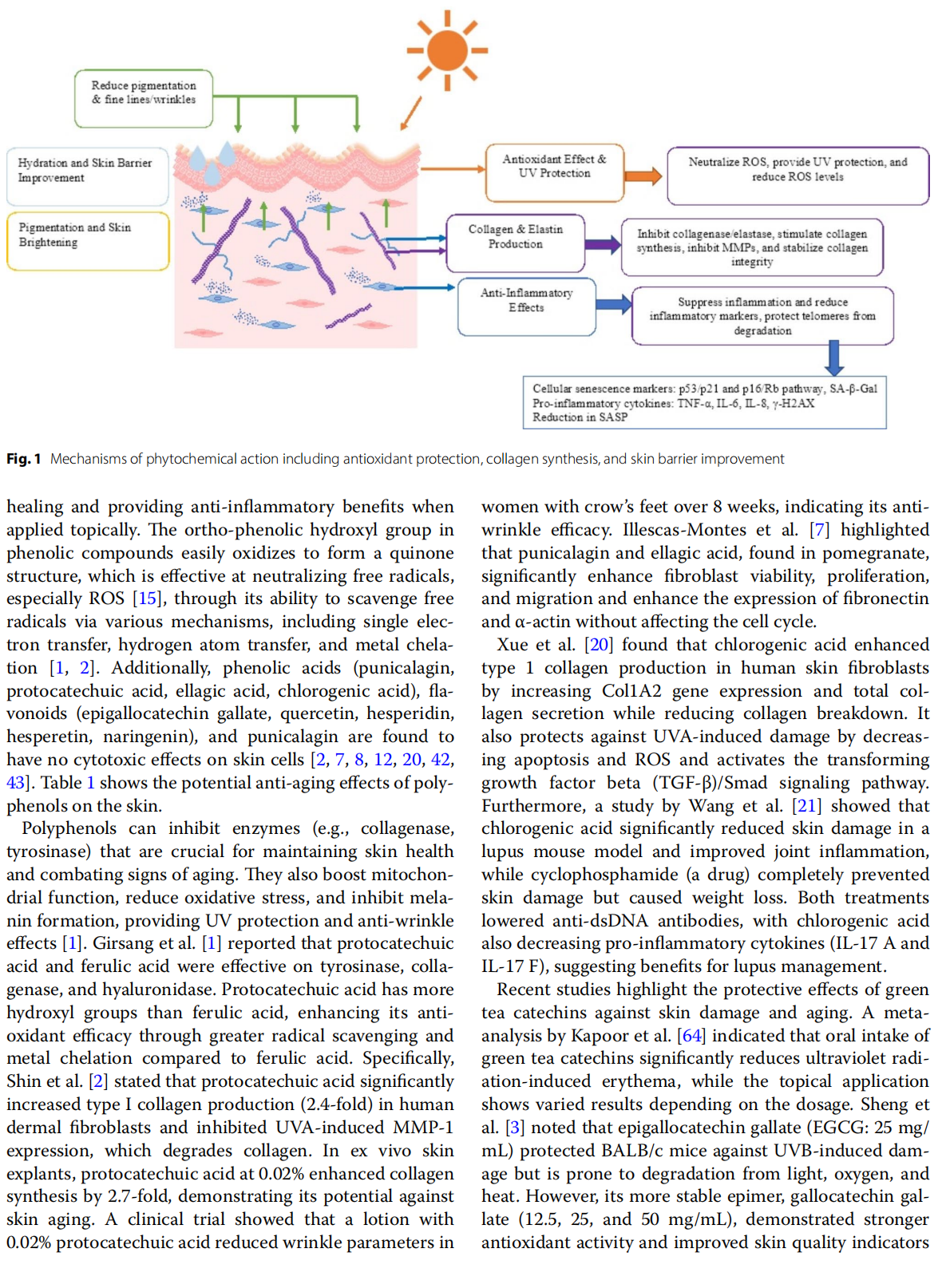
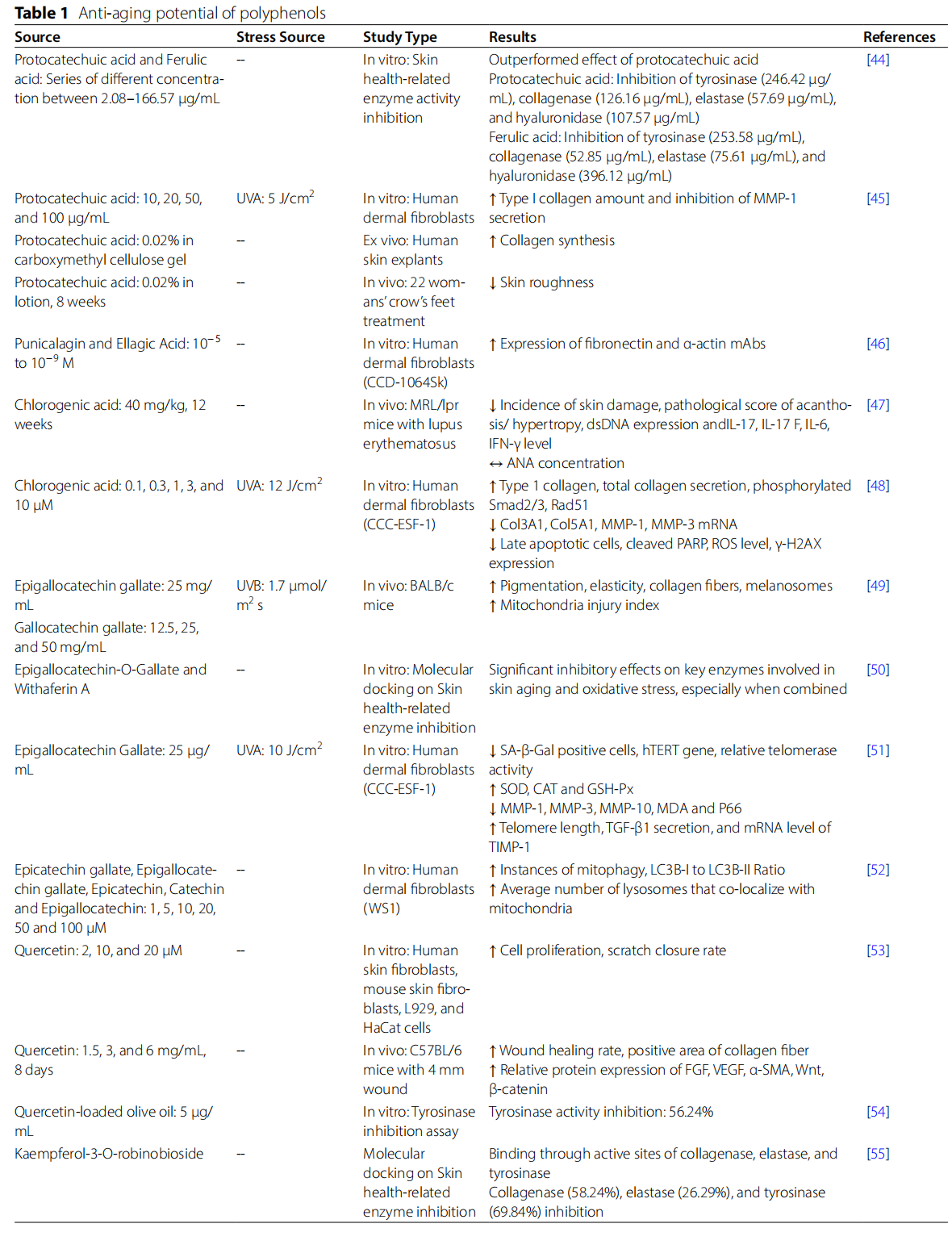
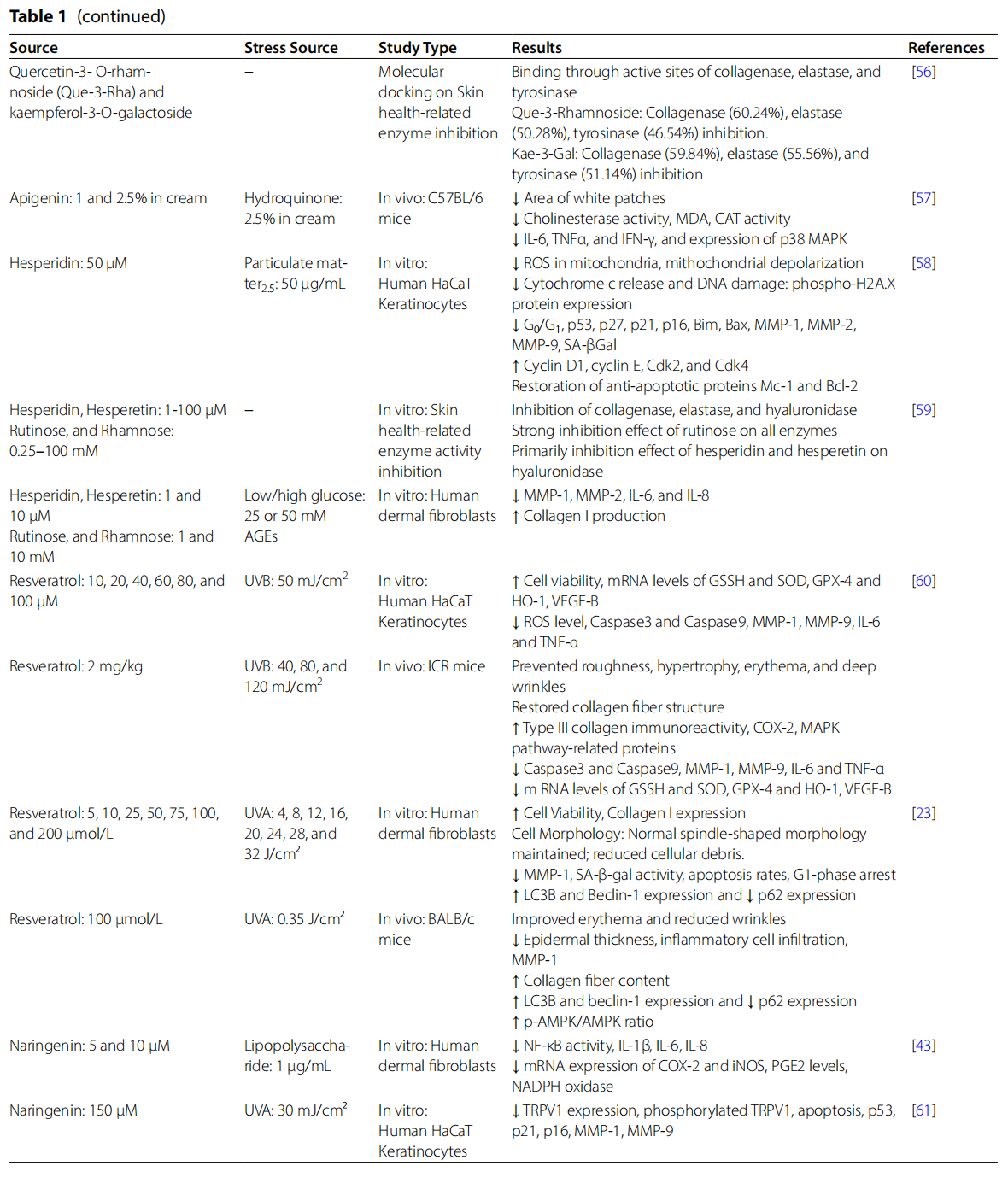
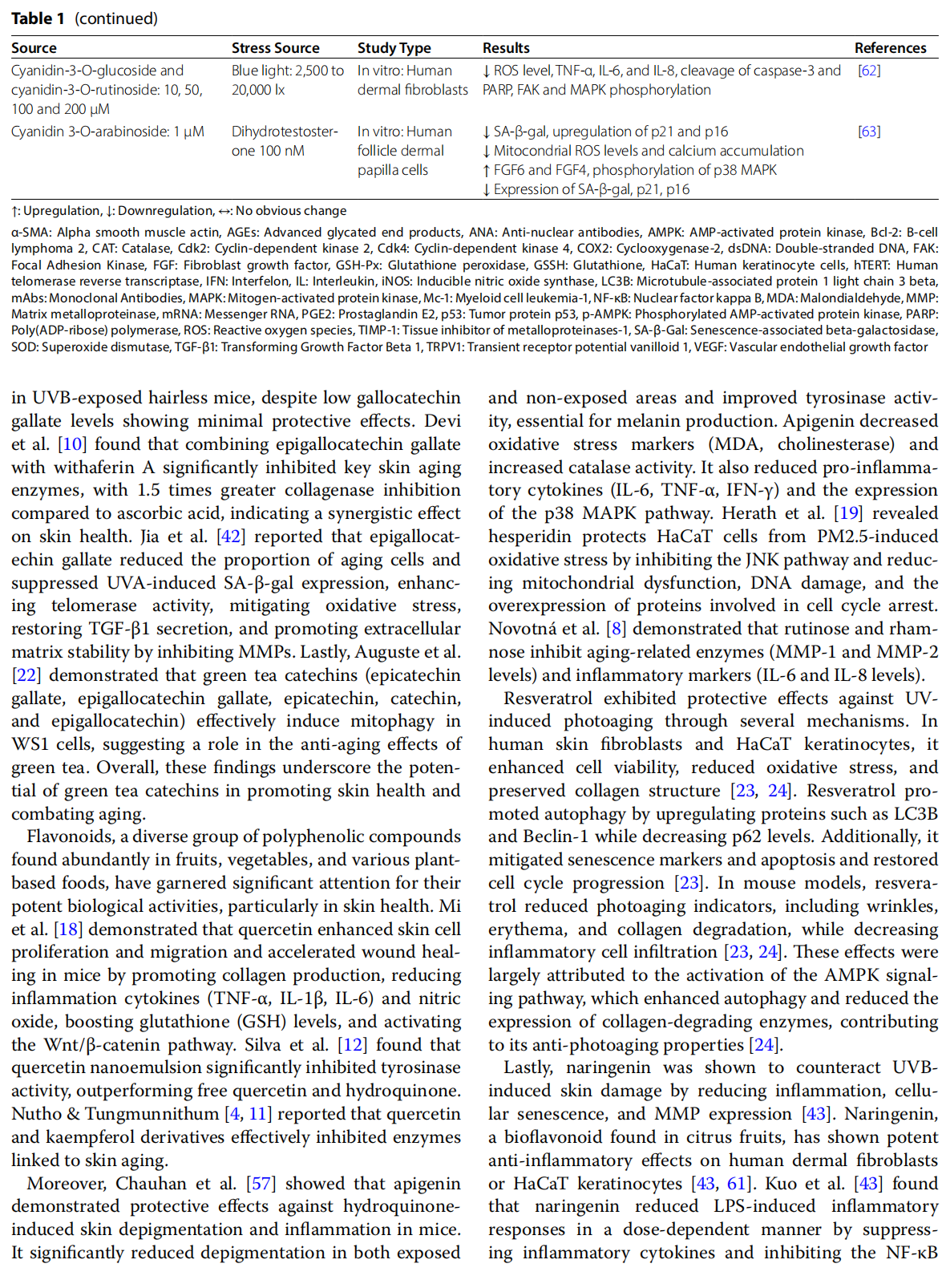
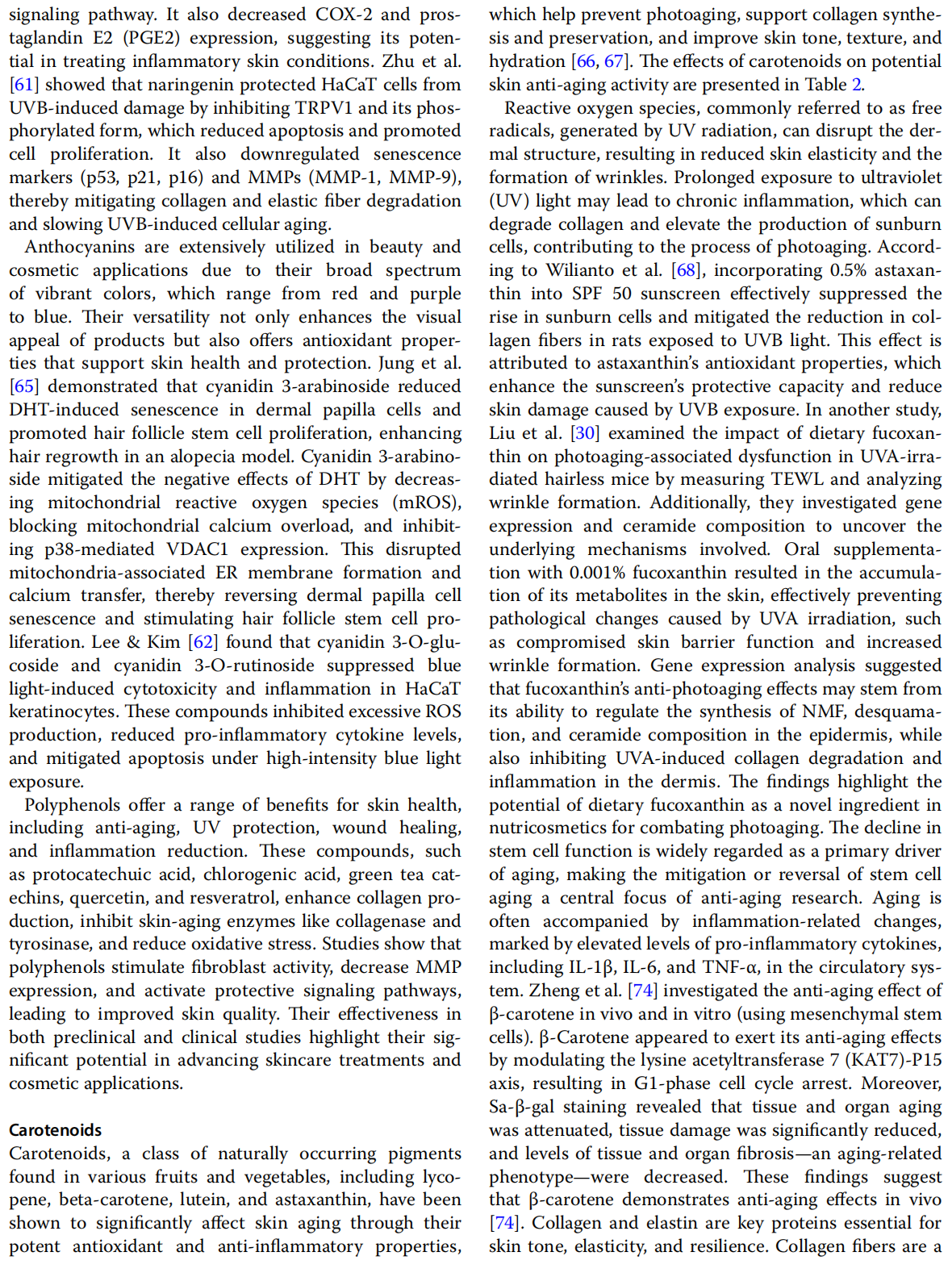
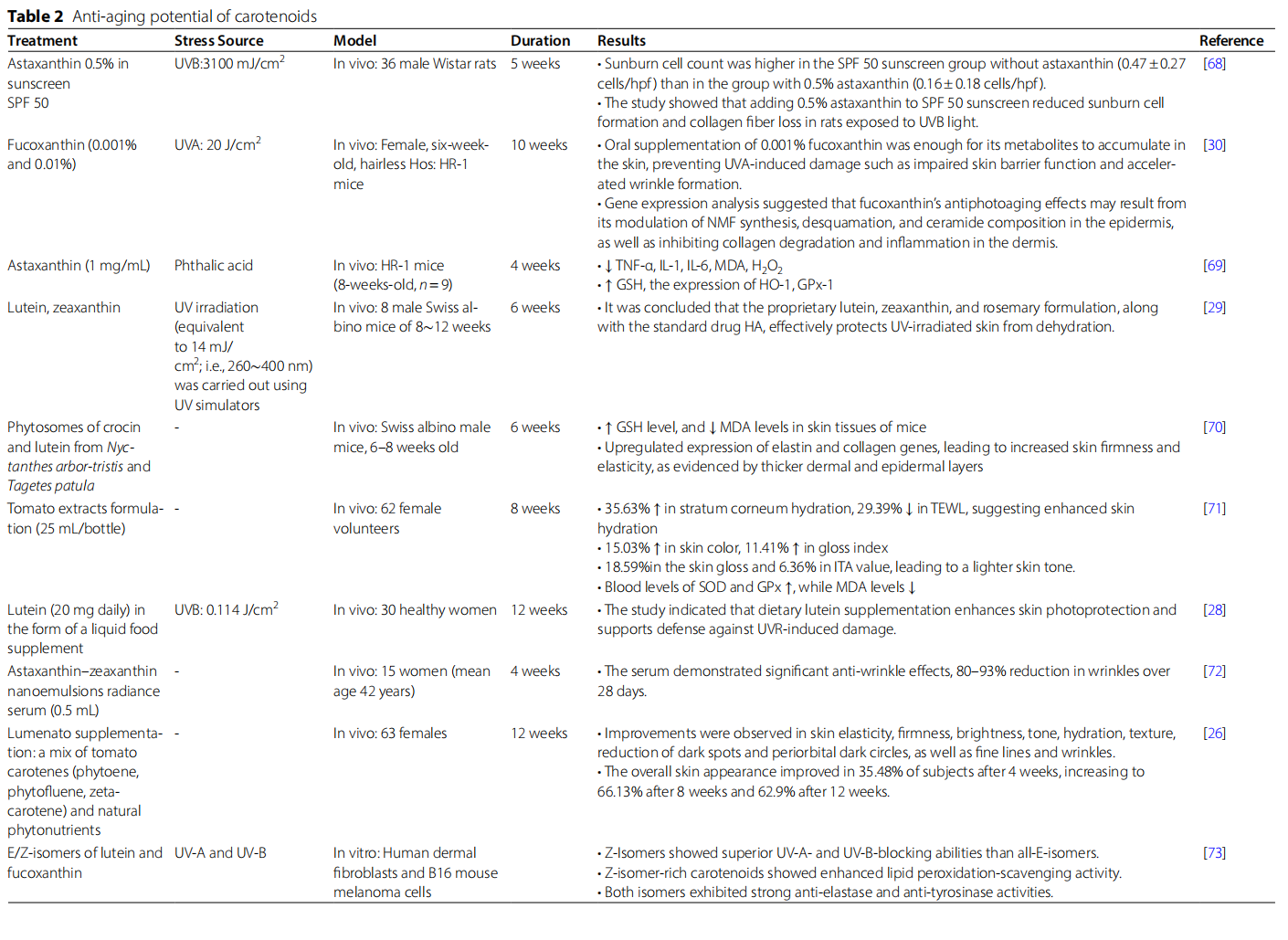

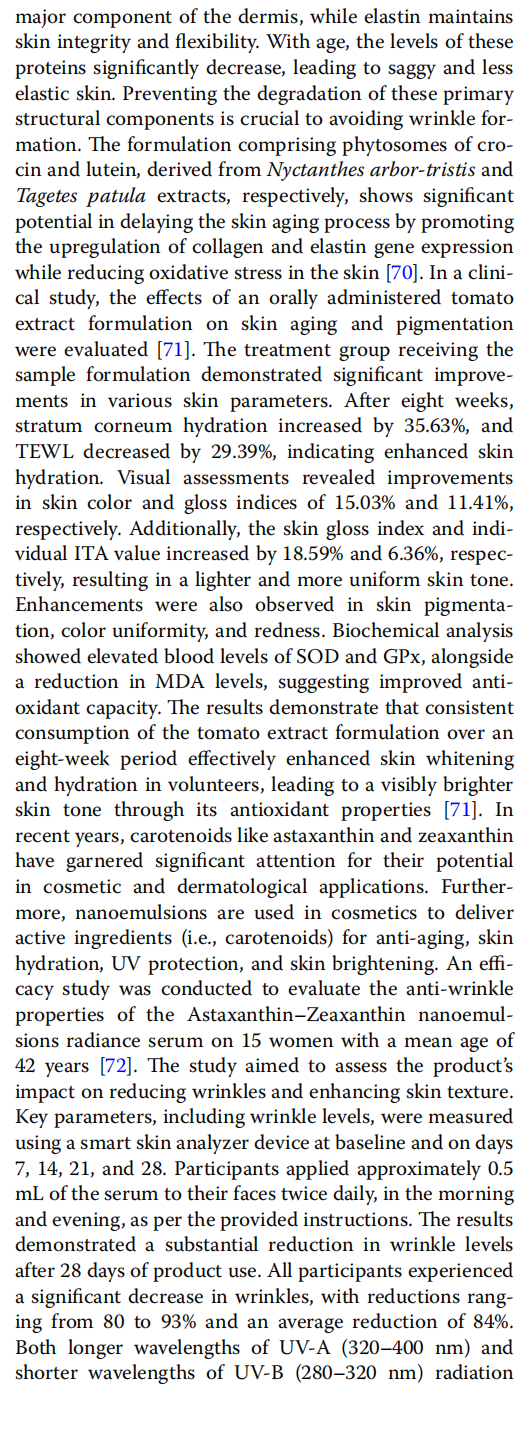
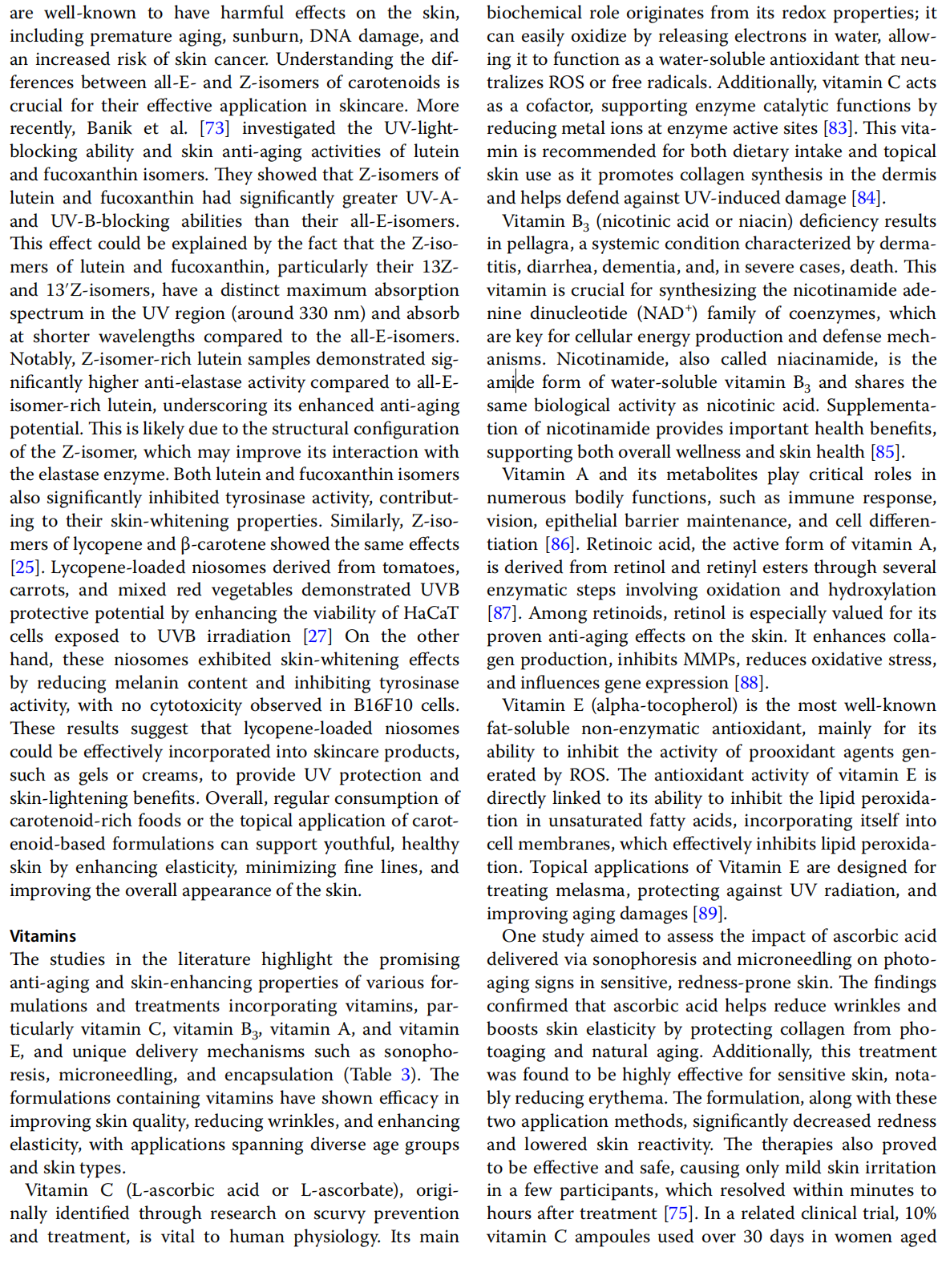
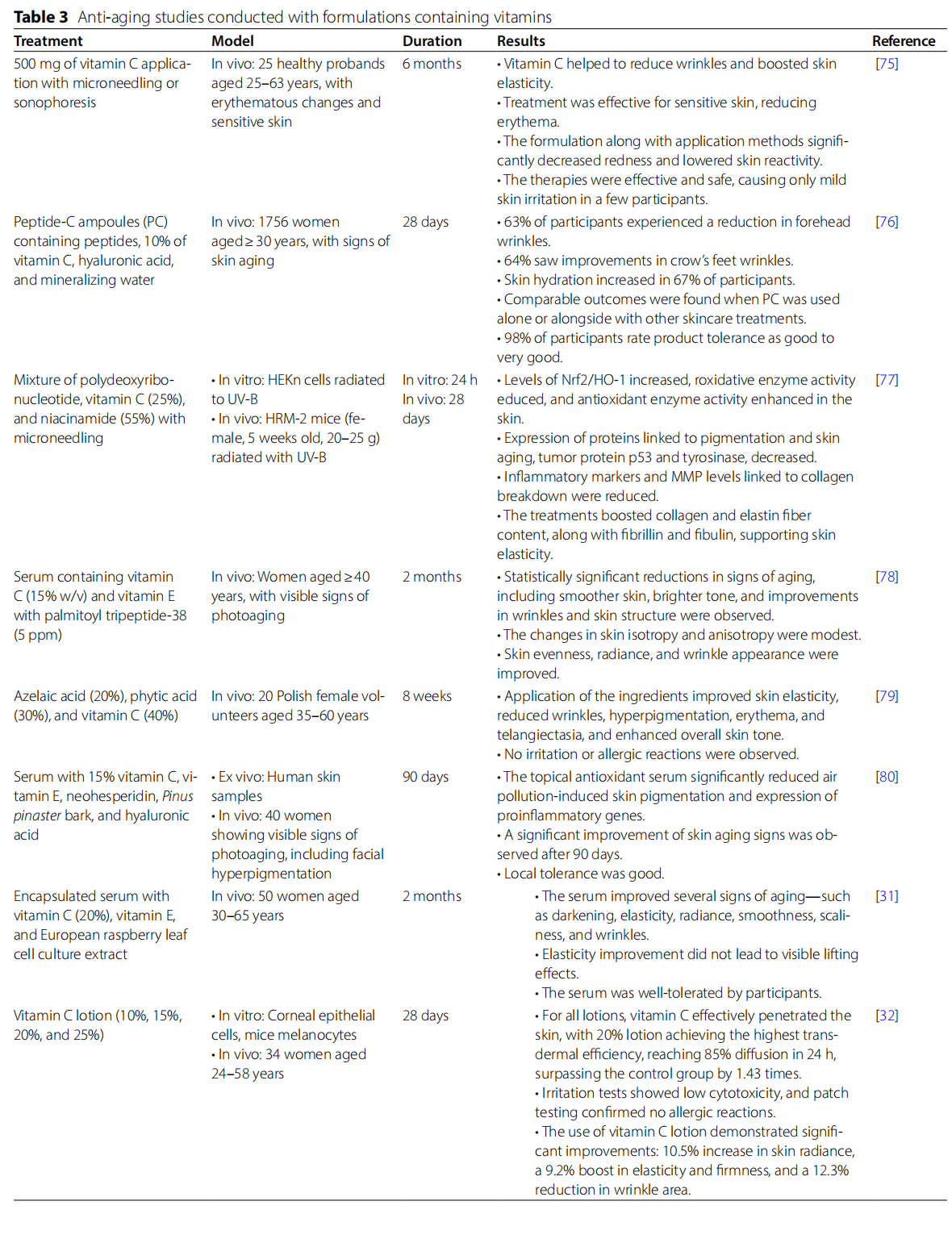
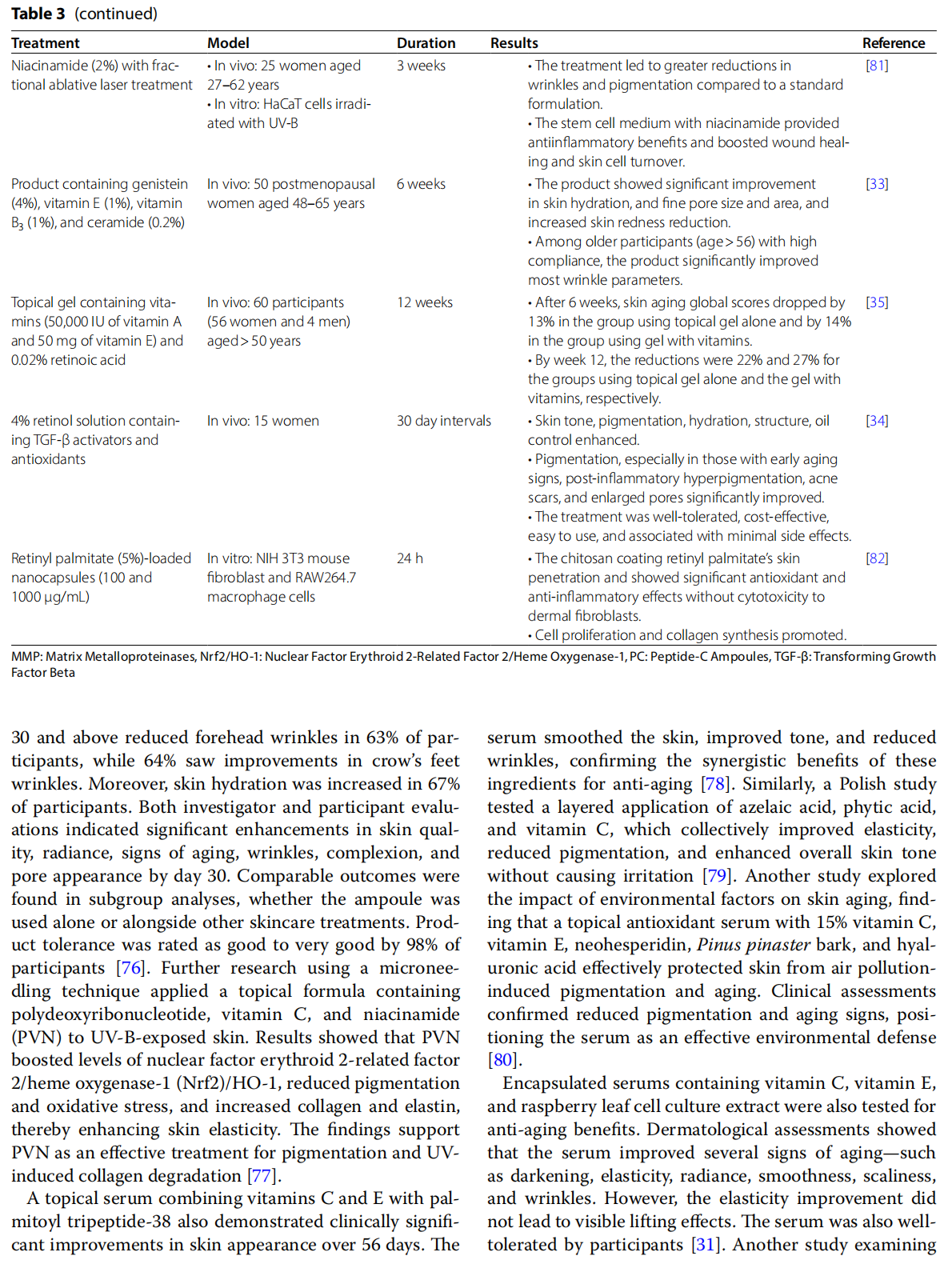
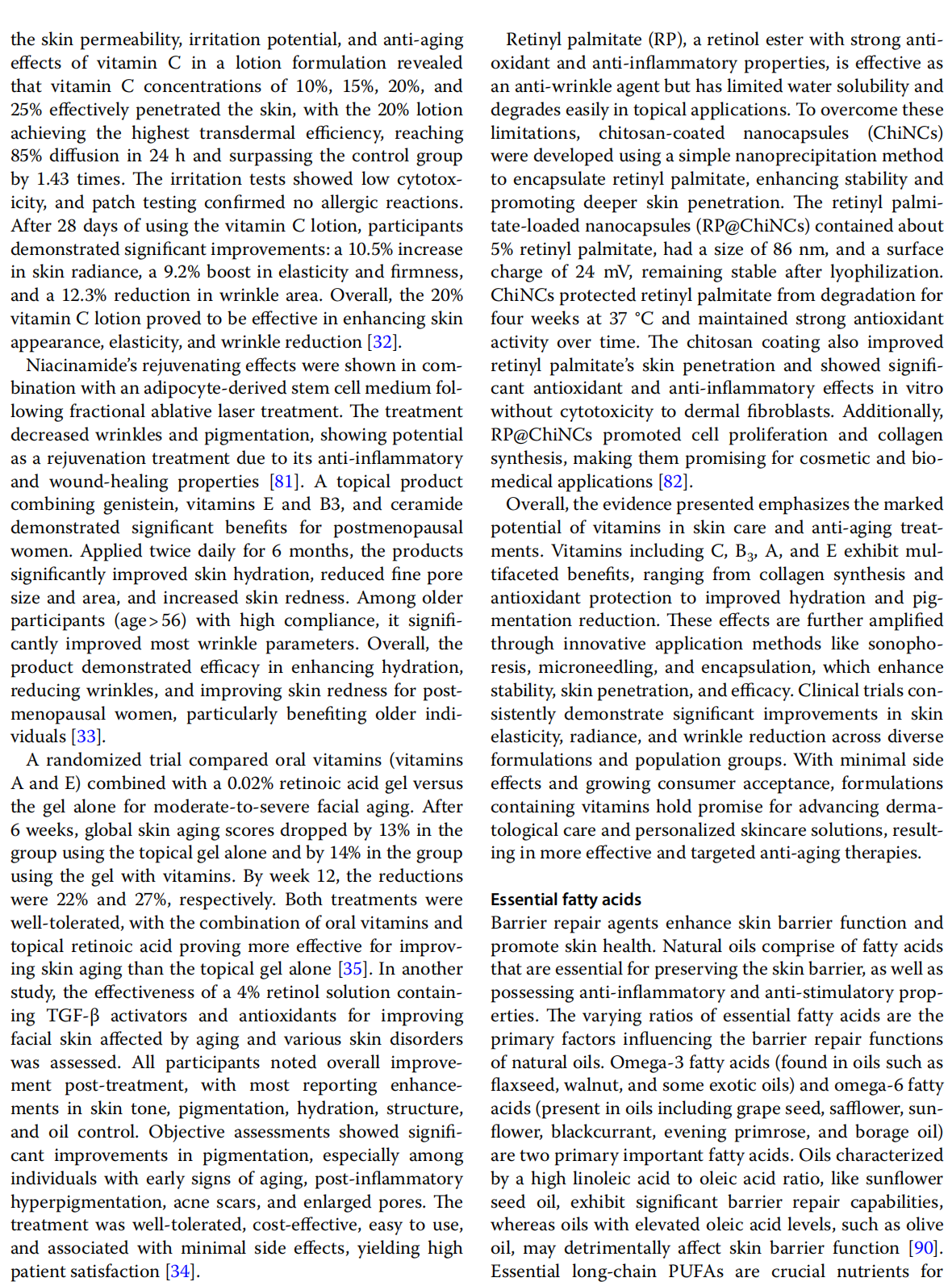
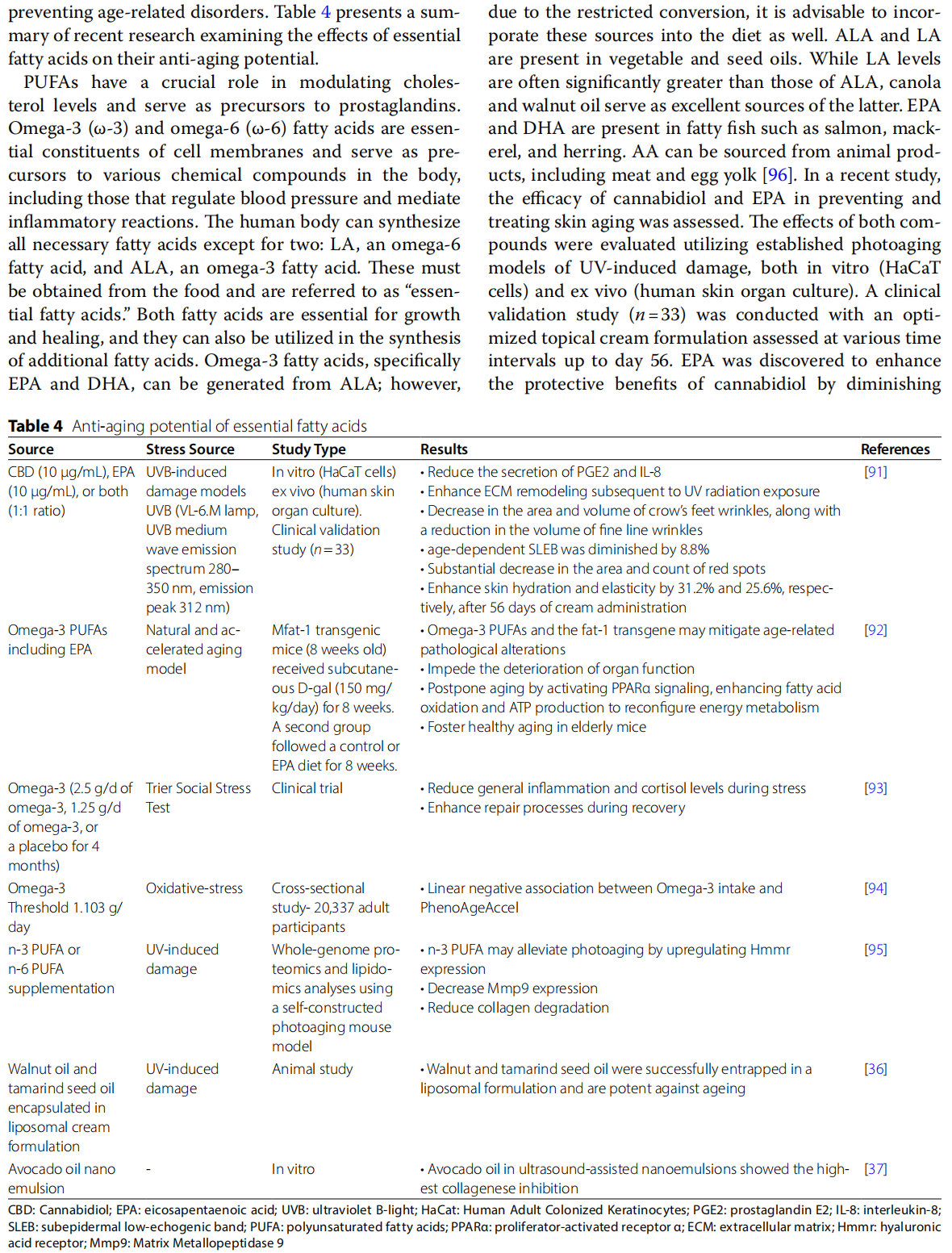
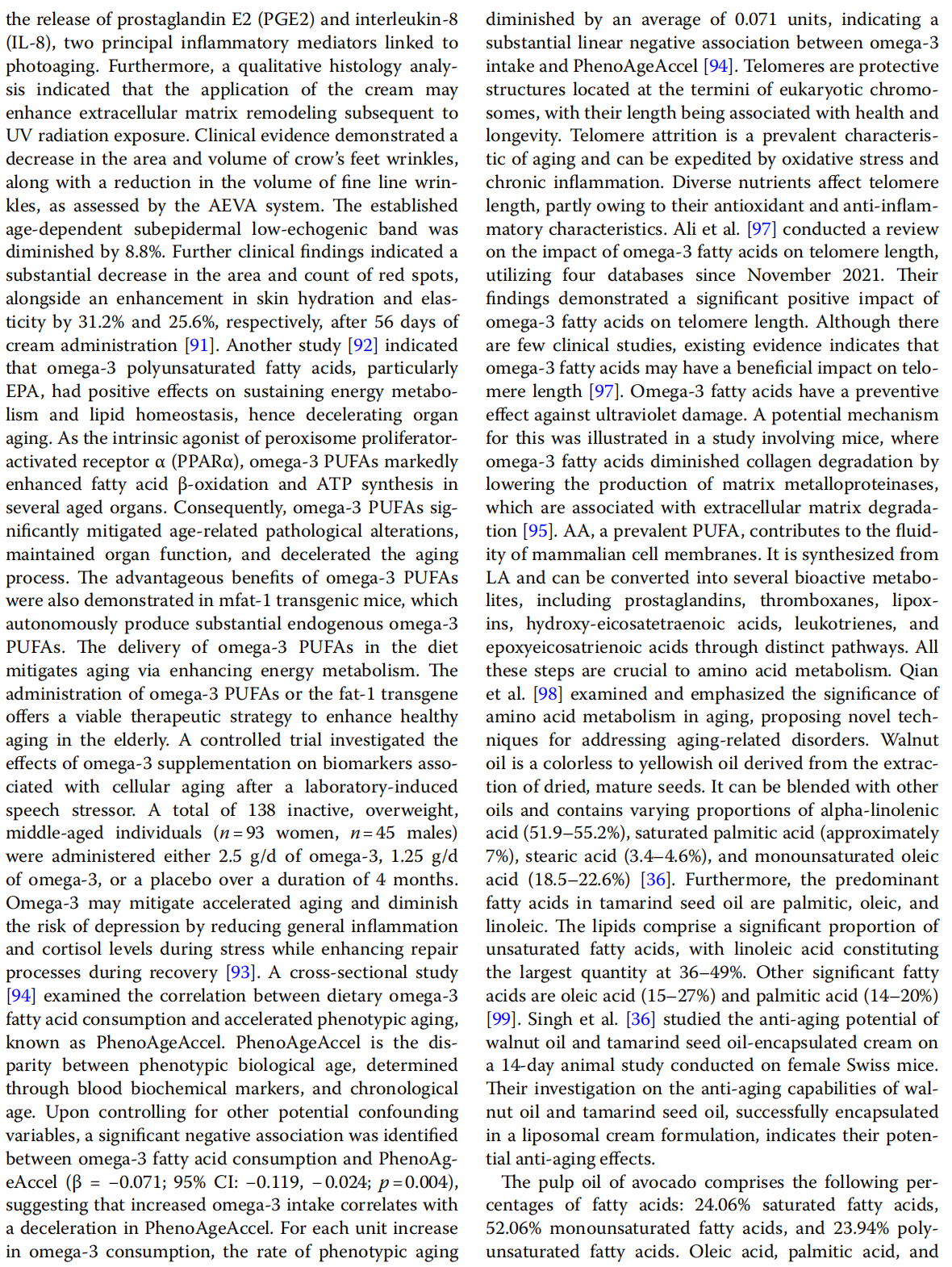
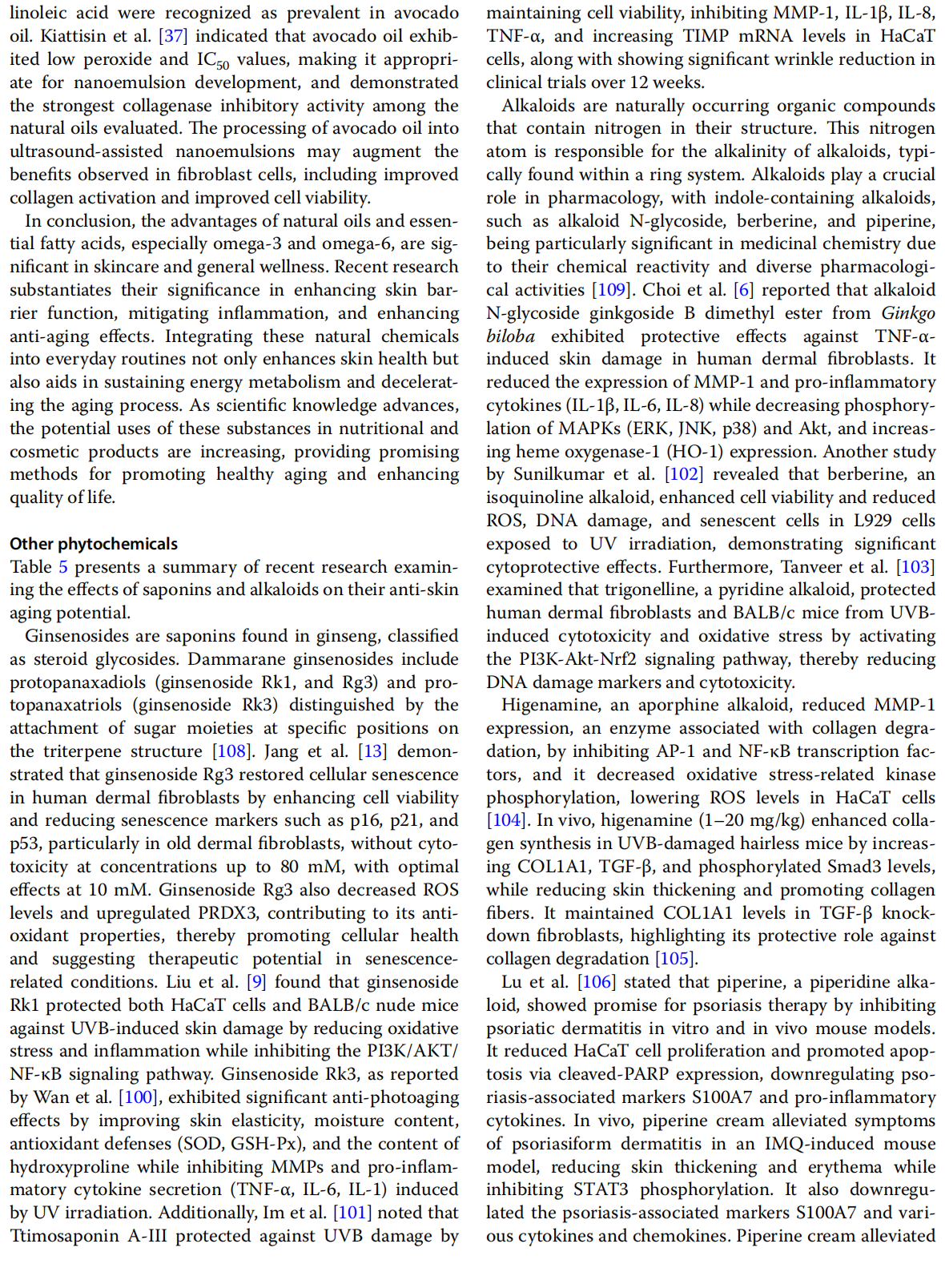
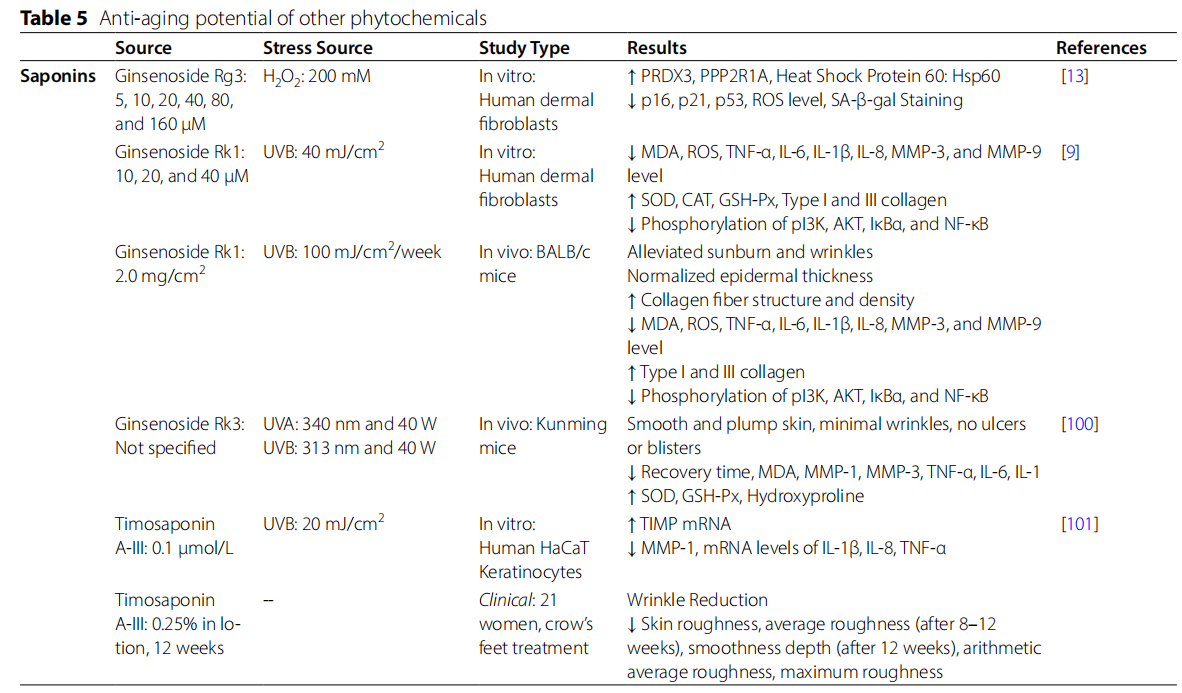
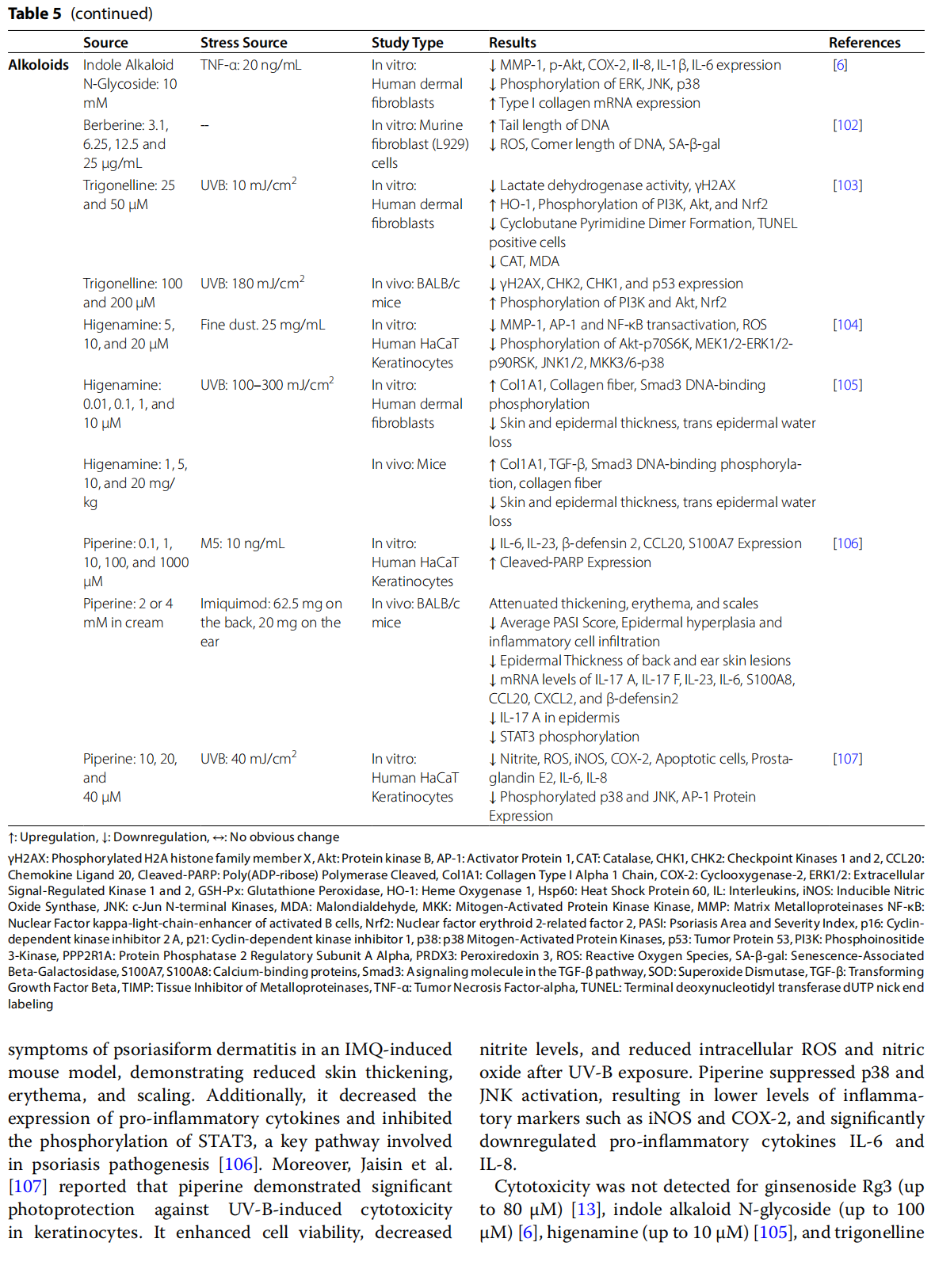
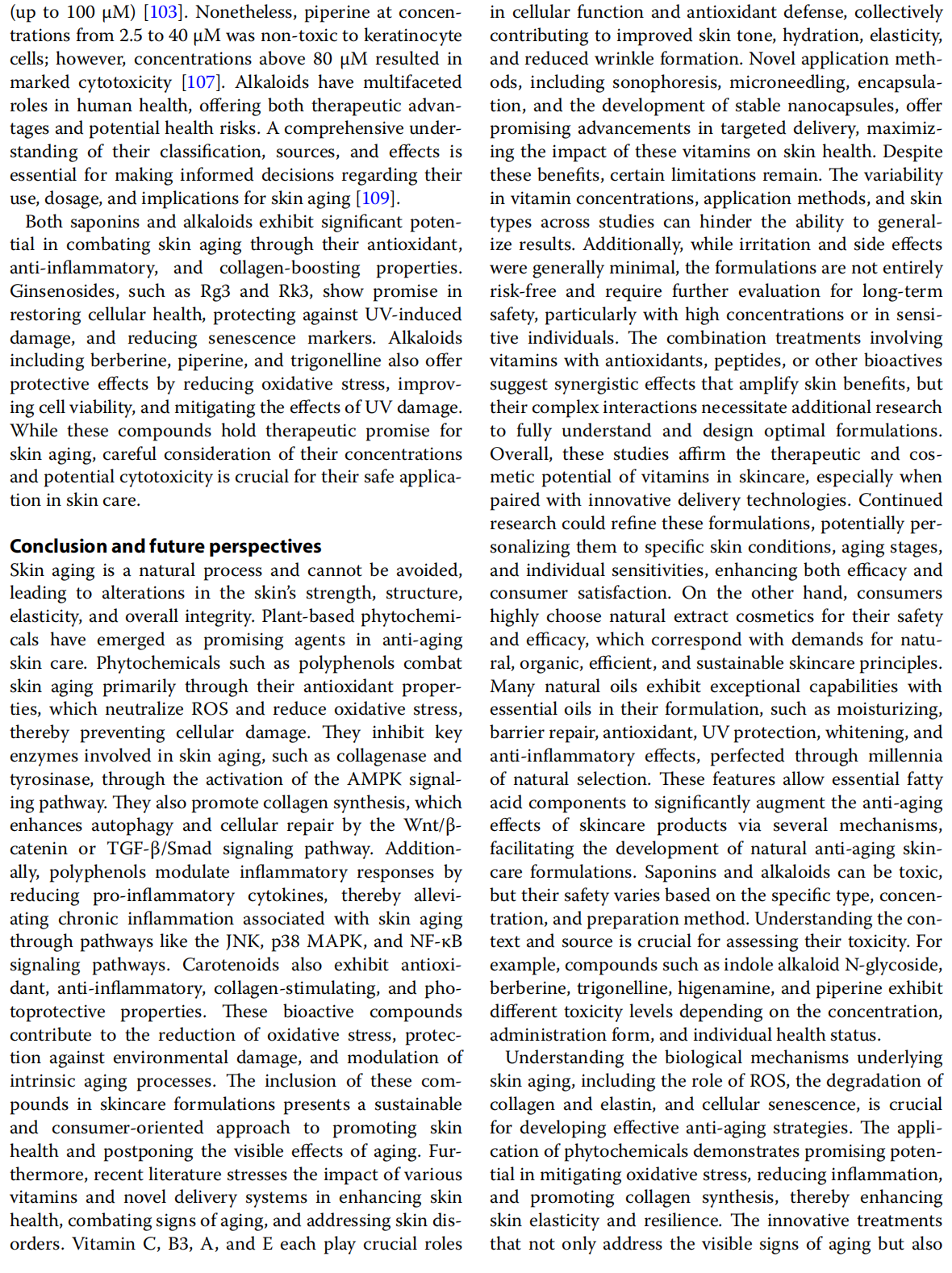
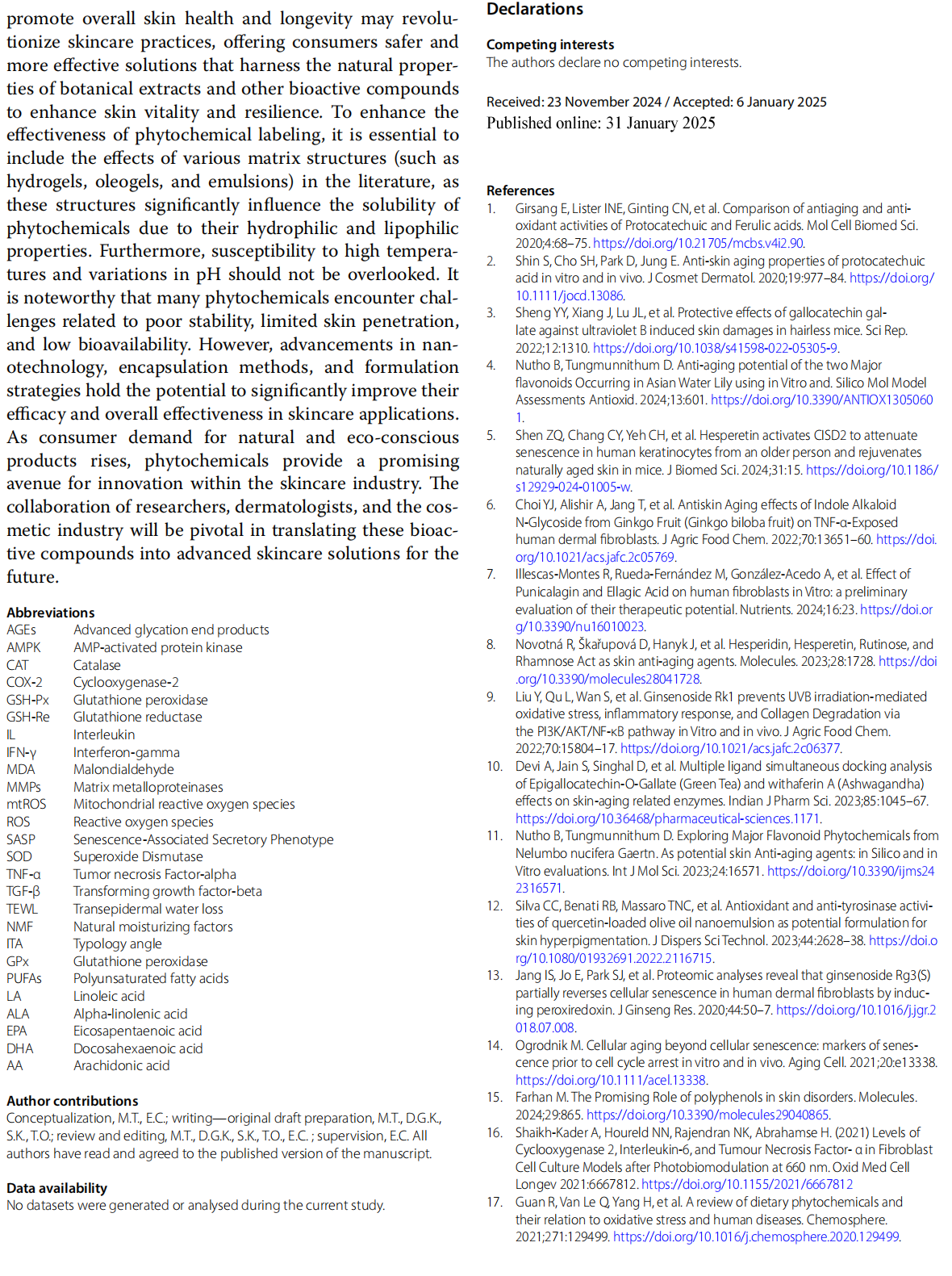
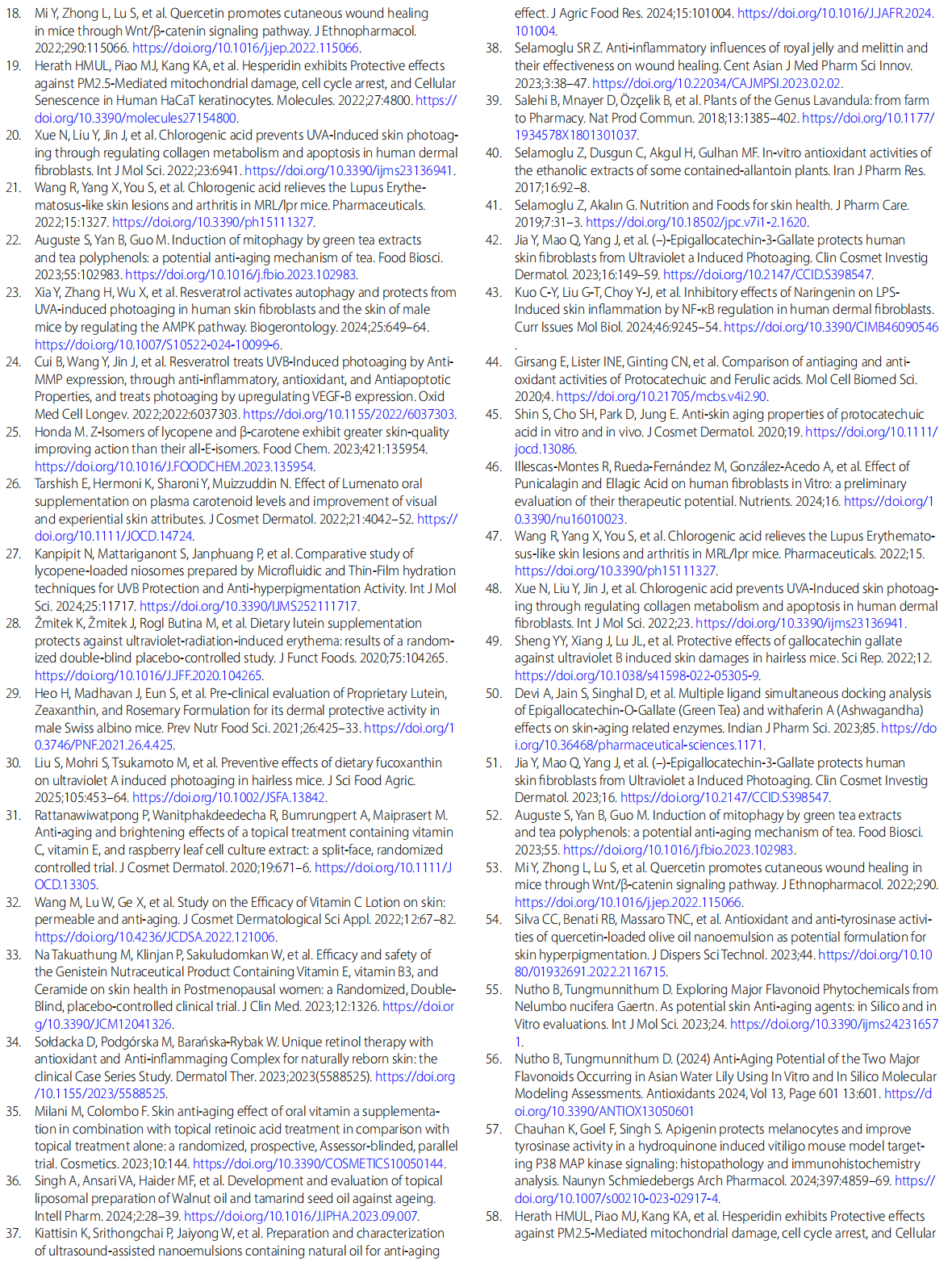
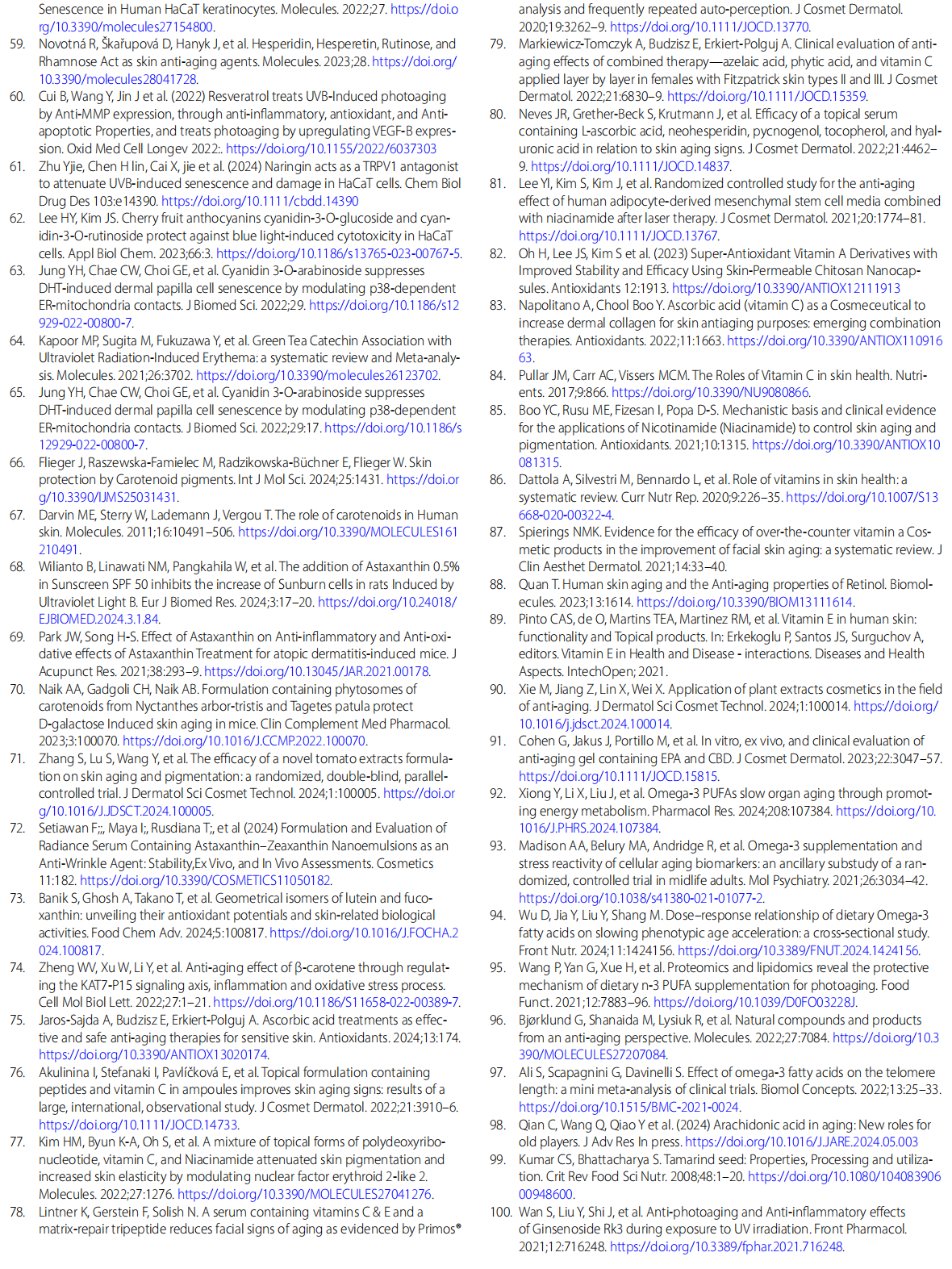
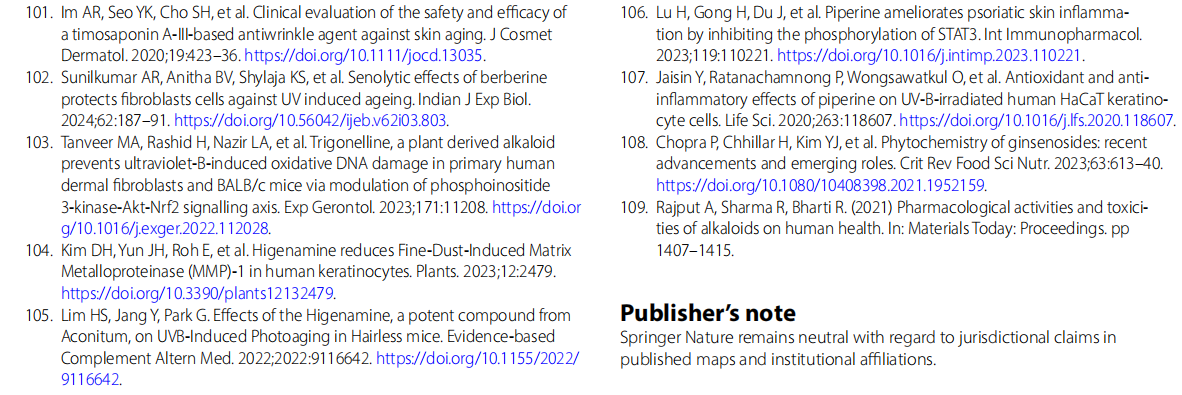
This article is excerpted from the Immunity & Ageing by Wound World.

























